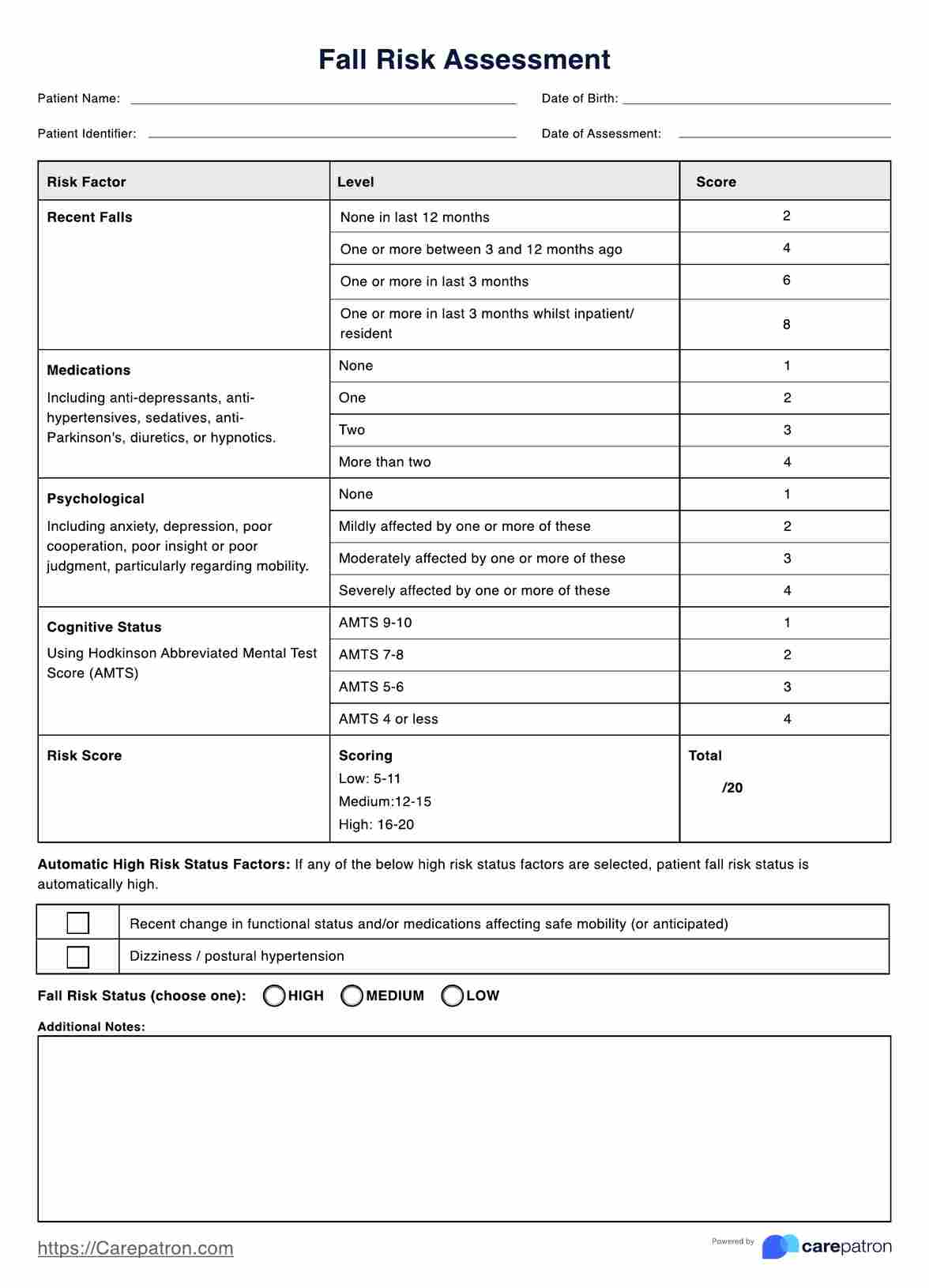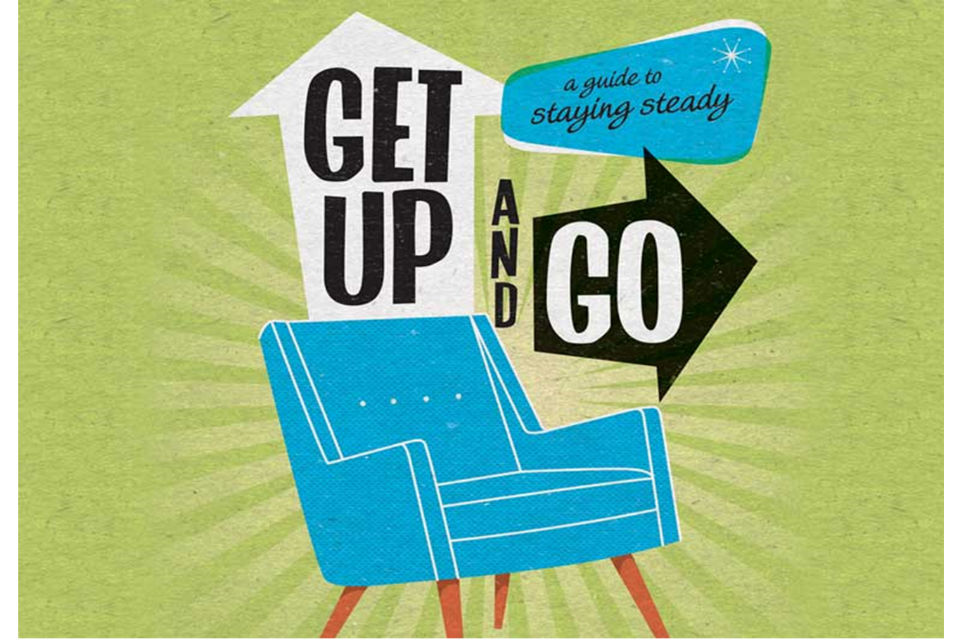Things about Dementia Fall Risk
Examine This Report about Dementia Fall Risk
Table of ContentsExamine This Report on Dementia Fall RiskWhat Does Dementia Fall Risk Do?All about Dementia Fall RiskEverything about Dementia Fall RiskNot known Facts About Dementia Fall Risk
Guarantee that there is a marked area in your medical charting system where personnel can document/reference scores and document relevant notes connected to fall avoidance. The Johns Hopkins Autumn Risk Analysis Tool is one of several tools your staff can make use of to assist avoid adverse clinical occasions.Client drops in medical facilities are typical and debilitating damaging events that persist despite decades of initiative to minimize them. Improving communication throughout the analyzing registered nurse, treatment team, patient, and patient's most involved family and friends may strengthen loss prevention initiatives. A team at Brigham and Women's Hospital in Boston, Massachusetts, looked for to develop a standard fall prevention program that focused around enhanced interaction and patient and family interaction.

The innovation team stressed that effective application depends on patient and staff buy-in, assimilation of the program right into existing workflows, and fidelity to program procedures. The team noted that they are grappling with how to make certain continuity in program execution during periods of crisis. Throughout the COVID-19 pandemic, for instance, a rise in inpatient falls was related to restrictions in patient interaction along with constraints on visitation.
Dementia Fall Risk - Questions
These events are commonly considered avoidable. To execute the treatment, companies require the following: Accessibility to Loss TIPS sources Fall suggestions training and re-training for nursing and non-nursing staff, including brand-new nurses Nursing process that allow for person and family interaction to conduct the drops analysis, make sure use the prevention plan, and perform patient-level audits.
The outcomes can be extremely harmful, typically speeding up patient decrease and triggering longer health center remains. One research study estimated keeps raised an added 12 in-patient days after a client fall. The Fall TIPS Program is based upon appealing clients and their family/loved ones across three major processes: analysis, personalized preventative interventions, and bookkeeping to make certain that individuals are involved in the three-step fall prevention process.
The patient assessment is based upon the Morse Loss Range, which is a confirmed autumn danger assessment device for in-patient health center setups. The scale consists of the six most common factors individuals in hospitals drop: the client loss history, high-risk problems (including polypharmacy), use IVs and various other external tools, mental standing, stride, and movement.
Each risk factor relate to one or even more actionable evidence-based treatments. The registered nurse produces a plan that incorporates the treatments and is visible to the care group, client, and family members on a laminated poster or printed aesthetic help. Registered nurses develop the strategy while meeting the individual and the client's family.
Excitement About Dementia Fall Risk
The poster functions as an interaction tool with other members of the client's care team. Dementia Fall Risk. The audit useful site part of the program consists of assessing the client's understanding of their threat factors and prevention plan at the system and health center degrees. Registered nurse champs conduct at the very least 5 individual interviews a month with people and their families to check for understanding of the loss avoidance strategy

A projected 30% of these falls lead to injuries, which can range in severity. Unlike various other damaging occasions that need a standard scientific reaction, autumn prevention depends highly on the demands of the person. Consisting of the input of individuals that recognize the individual finest permits greater personalization. This strategy has proven to be much more effective than fall avoidance programs that are based primarily on the manufacturing of a threat score and/or are not customizable.
An Unbiased View of Dementia Fall Risk

Based on auditing outcomes, one site had 86% conformity and 2 sites had more than 95% compliance. A cost-benefit evaluation of the Autumn pointers program in eight health centers estimated that the program price $0.88 per individual to implement and led to savings of $8,500 per 1000 patient-days in direct prices connected to the avoidance of 567 tips over 3 years and eight months.
According to the development group, organizations interested in applying the program should carry out a Go Here preparedness evaluation and drops avoidance gaps evaluation. 8 Additionally, organizations need to make sure the essential facilities and process for execution and develop an implementation strategy. If one exists, the company's Fall Prevention Job Force ought to be associated with preparation.
Getting My Dementia Fall Risk To Work
To begin, companies must ensure conclusion of training components by registered nurses and nursing aides - Dementia Fall Risk. Health center team basics need to analyze, based upon the requirements of a hospital, whether to use a digital health document printout or paper version of the autumn prevention plan. Carrying out groups must hire and train nurse champions and establish processes for auditing and coverage on loss information
Staff need to be included in the procedure of revamping the process to engage patients and family members in the evaluation and prevention strategy process. Systems needs to be in area to ensure that units can understand why a fall took place and remediate the reason. Much more specifically, registered nurses need to have networks to provide recurring comments to both team and system leadership so they can readjust and enhance autumn prevention workflows and connect systemic problems.